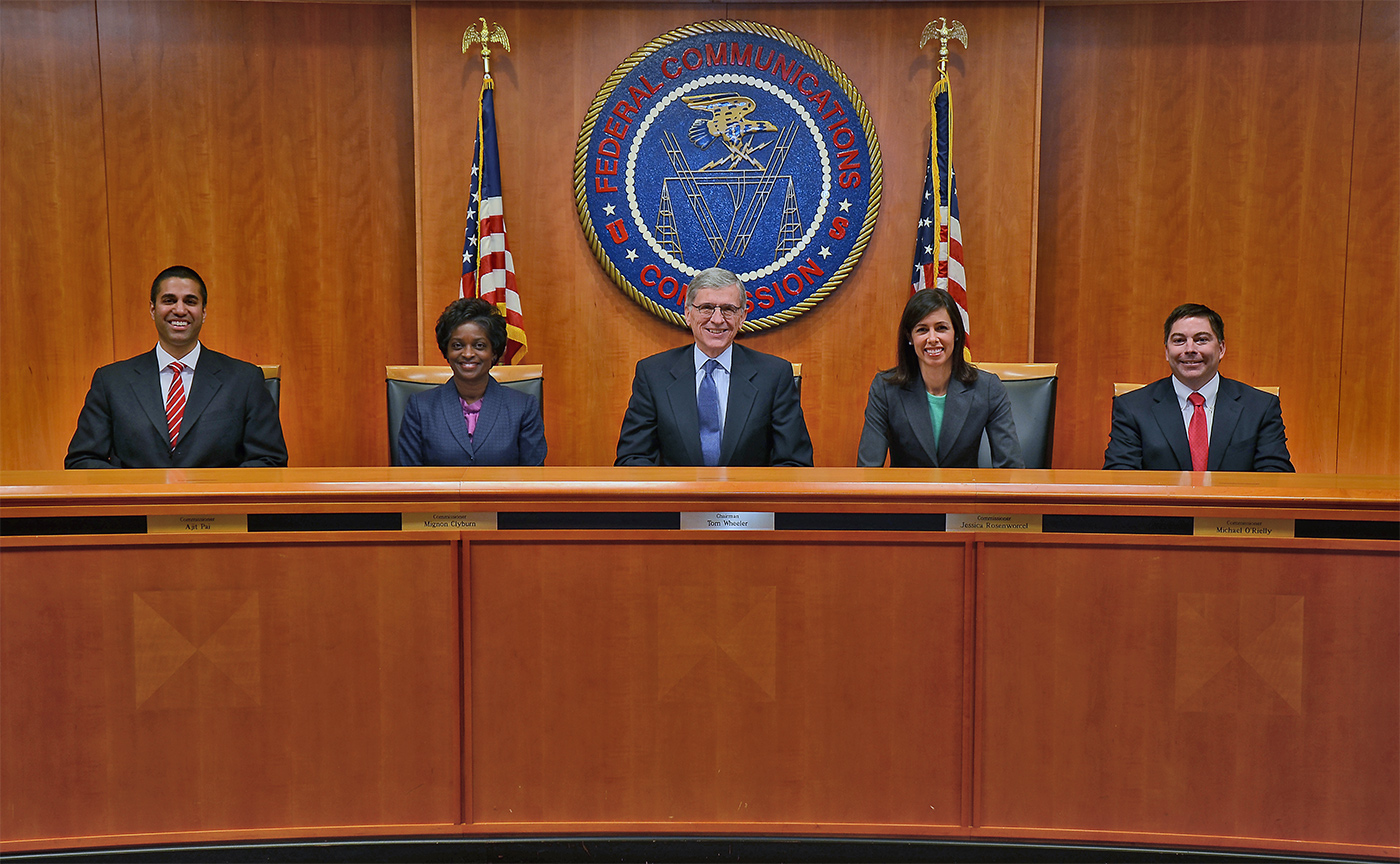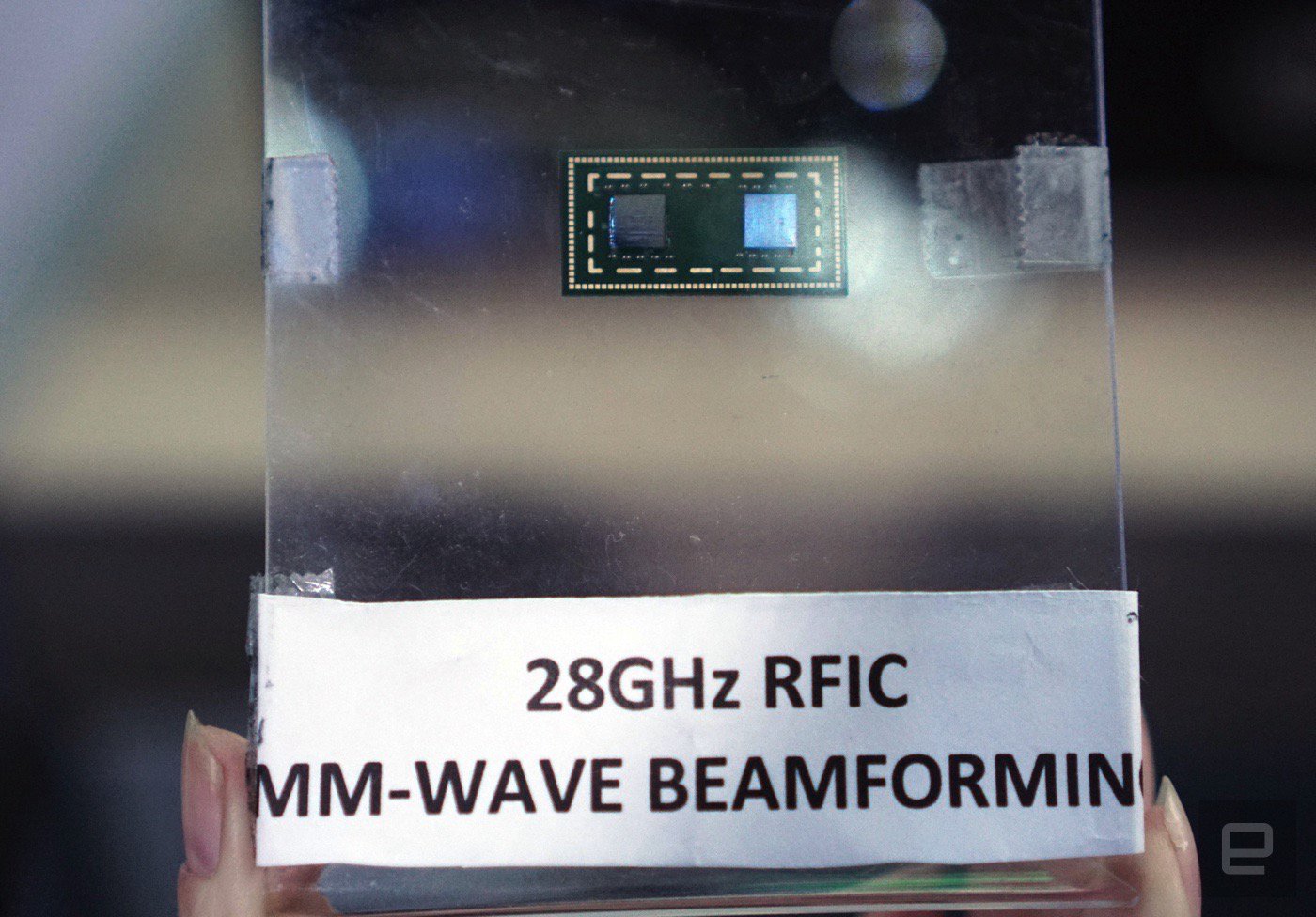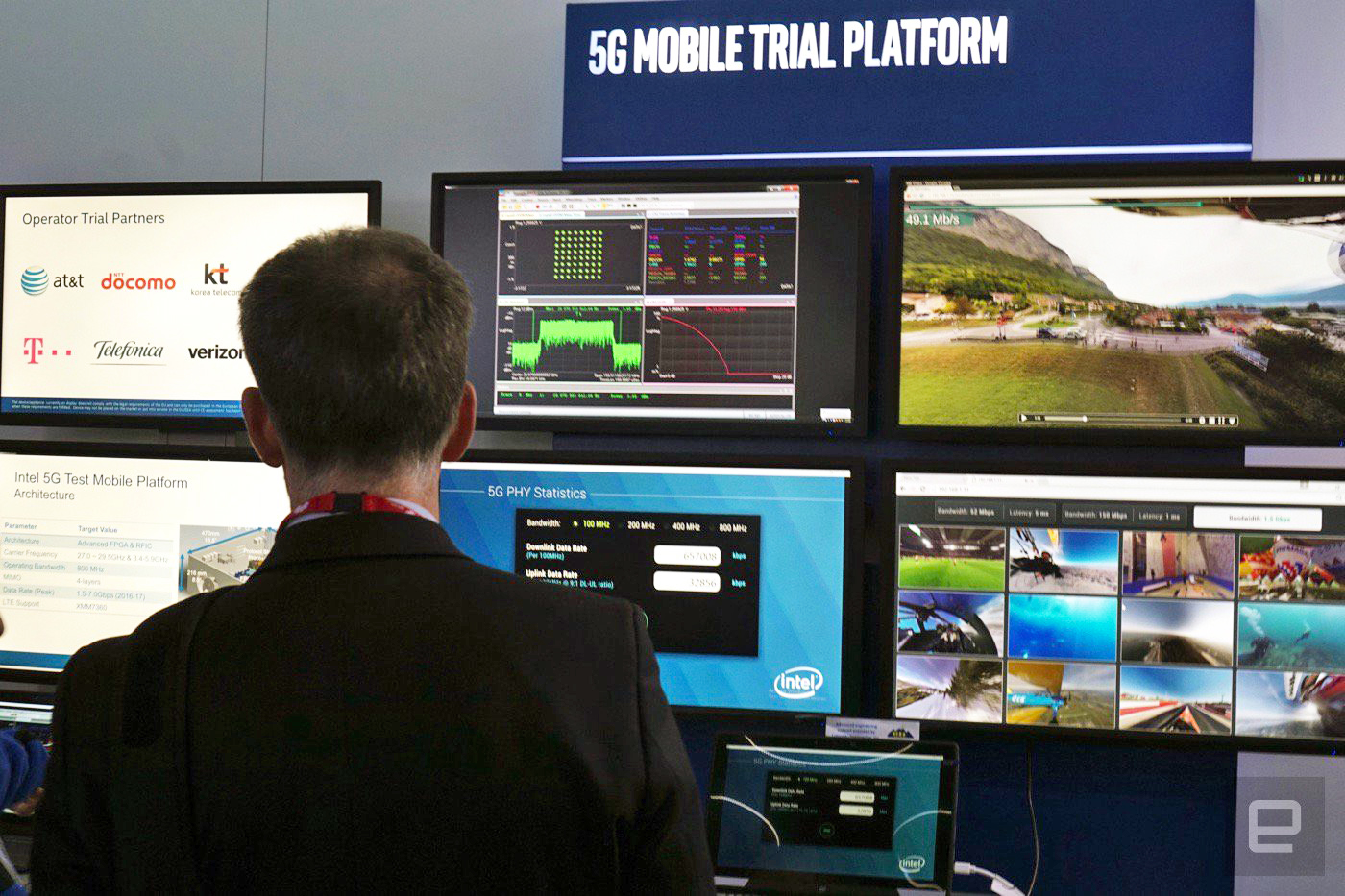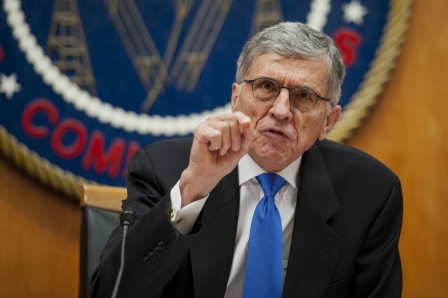What you need to know about the FCC’s 5G vote
Tomorrow morning, the five chairpeople of the Federal Communications Commission are expected to take their seats behind a long wooden table and vote on a foundation for a 5G future. That might sound a little dry, but consider the obvious: We demand richer, better content on our mobile devices by the moment, and we’re demanding faster speeds than ever before.
There’s still room to grow with existing LTE and LTE-Advanced networks, but the push for fifth-generation wireless tech is a push for a future with faster data speeds, less latency and coverage for more people. And beyond just smartphones, 5G could prove to be the connective tissue that more firmly binds together the Internet of Things and power mass augmented reality experiences. Who doesn’t want that? The FCC is due to deliver their thoughts at 10:30AM Eastern tomorrow, but here’s a quick rundown of what’s been going on from the beginning.
The Process

If you’re looking for speedy execution of ideas, the FCC might not be the best example. This whole process began in October 2014, when the FCC issued what’s called a Notice of Inquiry — basically a request for input — about using spectrum bands above 24 GHz for “mobile radio services.” After getting feedback and chewing on it for a year, the commission then released a Notice of Proposed Rulemaking (also known as an NPRM) to define the use of those new swaths of spectrum for wireless service, “including for next-generation, or 5G, networks and technologies.” More specifically, the commission is considering usage rules for using the 28 GHz, 37 GHz, 39 GHz, and 64-71 GHz bands, as well as for network security and the licensing frameworks that would define who gets access to what.
It’ll take years of engineering and prototyping and licensing and agreeing before the 5G standard emerges.
After the NPRM was published (along with statements that either wholly or partially agreed), the FCC basically opened the floor to comments from the public and affected companies, held a workshop to elaborate on some of the more technical details and listened to a bunch of industry talking heads bicker. This long slog hasn’t been without its road bumps, either: Countries attending the World Radiocommunication Conference in Geneva last year rejected feasibility studies for the 28GHz band. That said, that band is gaining steam because it’s been marked for use during a 5G test at the 2018 Pyeongchang Winter Olympics. Just remember: Tomorrow’s vote is mostly about identifying 5G bands for exploration and experimentation. Much of the real legwork is happening elsewhere.
The Tech

One of the central issues at play here is that 5G as a standard doesn’t exist yet; it’ll take years of engineering and prototyping and licensing and agreeing before that happens. That said, the FCC is trying to establish the frameworks to let tech and networking giants figure out what works best with the available spectrum.
Now, flash back to those spectrum bands I mentioned earlier: It’s frankly pretty cool they’re even on the table. A few years ago, it didn’t seem likely that we’d be able to tap into frequencies above 28GHz. As Commissioner Mignon L. Clyburn put it, “their wavelengths were too short and the signal propagation losses were too high,” making them unsuitable for mobile service. While that “millimeter-wave” spectrum is naturally short-range, it also allows for much faster data transfers and speeds. Think: up to 1 gigabit per second. Since those wavelengths are so short, one of the prevailing ideas for 5G deployment is using lots of “small cells” that act like tinier, less expensive cell towers to form much denser networks.
Naturally, wireless companies have already started their 5G testing. Samsung completed its first outdoor 5G wireless test in 2014, and partnered up with SK Telecom to test 5G transmissions on that contested 28GHz band earlier this year. Verizon is working with Samsung on 5G trials, and recently published its first 5G radio spec. AT&T plans to get its first outdoor 5G trials up and running by the end of the summer. Sprint demoed a 5G implementation last month in Philadelphia using a slice of 15GHz spectrum that delivered downloads speeds of up to 4GBs.
The Debate

Commissioners Clyburn and Jessica Rosenworcel, along with FCC Chairman Tom Wheeler, voiced their full support for the notice of proposed rulemaking. That left two commissioners, Ajit Pai and Michael O’Rielly, to only partially approve the intended plan.
Commissioner Pai is concerned that the FCC isn’t moving aggressively enough to maintain America’s position as a vanguard of 5G tech. Coincidentally, the commission turned down his proposal to consider more spectrum bands for exploration. He’s also worried that some of the licensing setups that define access to these new swaths of spectrum are just too complicated and could impede crucial investment down the road. Commissioner O’Rielly takes a similar stance, and also questions the need for overwrought security requirements and new access schemes when the FCC has successfully run spectrum auctions for years.
There are, of course, other objections beyond those laid out by commissioners Pai and O’Rielly. The most heated public debate so far hasn’t been among members of the commission — it’s been between a mobile industry that’s eager to expand into 5G territory and a satellite industry that already has a foothold there.
Here’s the gist: Satellite operators (think: Avanit and Inmarsat, among others) took issue with the FCC eyeing up spectrum in the 28 GHz band because it’s already being used for Earth-to-space communications systems — they don’t want to risk any interference, after all. Others, like EchoStar, don’t mind operating their fixed-satellite service systems alongside consumer wireless networks, as long as both are given primary status. These companies obviously aren’t on the same page, but on some level there’s still an “us vs. them” dynamic at play here.
It’ll be up to network companies, carriers, satellite operators and lots of engineers and lawyers to eventually knit together the world’s next-generation wireless services.
Meanwhile, the consumer wireless industry pushed back by outlining a way for everyone to share that slice of the airwaves. AT&T, Nokia, Samsung, T-Mobile and Verizon gave the FCC results of a preliminary, Nokia-run simulation pointing out how interference could be addressed — it would require satellite Earth stations to abide by a power limit. Believe it or not, there’s quite a bit of shade-throwing going down here too: The parties who submitted that Nokia report alleged that the technical studies submitted to the FCC by firms O3b and ViaSat have “been relatively simplistic and worst case and do not provide a sound engineering basis upon which to make policy decisions with respect to sharing.” Burn.
While all of these debates, screaming matches and moments of quiet contemplation will result in a vote tomorrow, the one thing to remember is the FCC’s actions are just one step. It’ll be up to network companies, carriers, satellite operators and lots of engineers and lawyers to eventually knit together the world’s next-generation wireless services. Here’s hoping all those people don’t forget we’re in this together.
(48)















